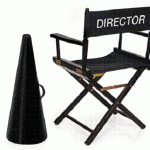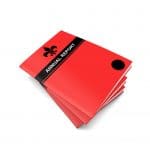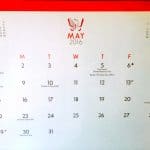If “wellness is a journey, not a destination,” why do so many health clubs and wellness businesses pitch their brand online without a map?
To connect with the right prospective members online, you need to understand their personal journey, then make sure your content gives them guideposts.
Willingness to sign up for a membership, or even ask for a free class card or a day pass, depends a lot on what kind of club you say you are, and how you back up that statement.
Your digital content should guide, refine, and reinforce the buying process every step of the way.
Content Checkpoint 1: Are prospects in the right place?
First of all, connect with prospects emotionally and reinforce their state of mind.
For example, Curves website does a pretty good job of connecting with women who don’t like people staring at them while they’re working out. Planet Fitness’s YouTube videos connect well with people who are intimidated by the traditional health club vibe and cost.
Before you write copy for your Google ads, website, email newsletter, Yelp listings, Facebook ads or business page, Instagram (yes, people do write copy for their profile and images), YouTube videos or anything else, decide how you want customers to feel about your club experience.
Do you offer a no-nonsense, bare-bones old-school gym experience? A country-club feel? Serenity? Kid-friendly? Reclaiming vitality? Empowering women? Something else?
Pick a customer type and a message, then stick to it. Every piece of content needs to tell that type of prospective customer that it feels right to be there.
If I’m a masters swimmer and your pool is overrun with kids, the selling stops right there — unless I plan to swim with my masters team, and at the moment I’m really just a parent looking for a safe place for my kids to splash around in the summer.
Web copy about private workout space appeals to a different audience. So will testimonials about your trainers’ listening skills, videos about your no-frills, no-nonsense workouts, in-depth details about the huge array of specialty equipment you have for competitive athletes, and so on.
If you’re not reinforcing a tailored, positive message built around a specific audience, all you’re selling is a place to sweat.
Content Checkpoint 2: Are they going in the right direction?
Your club’s management has been smart enough to bid well on a cluster of Google AdWords centered around “MMA for fitness in Cleveland OH.” You’ve got your search phrases mapped to keywords and your landing page content says that your club caters to mixed martial arts in northern Ohio. You’ve even turned on geotargeting.
You’ve hooked ’em, right?
Now, tell them where to go. Your website’s job is to guide them to the next logical step in their journey.
Maybe you ought to invite their email address and use an autoresponder to share more tidbits about the info they’re likeliest to want next (clue: it probably isn’t a free club tour — yet).
Does your FAQ answer the obvious questions that customers have at this point? Does it address the most common fears and misconceptions that your prospective customers usually have?
Even location, hours of business, and class schedule support a buying decision so that customers get the experience they need and want.
“Oh… you guys aren’t open on weekday mornings. That’s the only time I can come.” or “FINALLY! A pool within 10 miles of me that isn’t full of water aerobics classes.”
After all, giving customers the experience they need and want is the real key to retention.
If visitors have stumbled into the wrong place, tell them so: “The One and Only Cleveland Club for Experienced MMA Fighters” communicates in a positive way which customers will — and won’t — feel at home in your gym.
Don’t forget to go back and refine your AdWords PPC campaigns so you get the customers who really fit your business — and avoid frustrating and disappointment the ones looking for something you don’t offer.
Checkpoint 3: Are prospects moving toward membership?
New members enter the sales pipeline long before you even realize they exist.
They may have seen your ad about how great Shaundra felt about herself after losing weight on your 12 week Fast-Fit program. They may have Googled for a 24-hour gym with a basketball court within reasonable driving distance of their home or office.
They think your club might be the right place for them. You’ve shared enough information the basics — hours, location, the “make or break” types of info to make sure you’re still on their short list.
They’re not quite ready to walk in the door, but close. Now, they have questions about the experience.
What happens to my 12-week program if I miss a week? Can I still shoot hoops if there’s a league tournament going on? Is your masters swim coach super-competitive or more about having fun? Will I feel like people are looking at me? I’m diabetic — is your fitness instructor going to give me a hard time if I need to treat a low during class?
You don’t need to read their minds. Just ask your current members: “How is this place different from what you expected when you first joined? What were you expecting vs what it’s really like? What do you wish you had known before you joined?”
Then use social media and your FAQ to resolve common misgivings people typically have right before they decide to join your health club or sign up for a program.
Content Checkpoint 4: Did they miss their turn?
Make sure your search ad, social, and web copy are specifically relevant to the objectives of prospects who’d see real value in your club.
It’s easy to fall into the trap of producing copy to try to appeal to everyone.
Your club is not a $100 bill; not everyone’s going to like it. And that’s a good thing.
If your tennis training program focuses on competitive junior and semi-professional athletes, don’t waste space posting videos on Facebook about “Five Nutritional Essentials” or “Basic Rules of Tennis.” Do you really think a semi-pro tennis player doesn’t know the basic rules? Of course she knows how to fuel for a tournament — and if she doesn’t, she needs expert advice, not “essentials.”
If you initially presented yourself as an intermediate and advanced tennis training center — and now you’re drifting back to generic, vaguely-tennis oriented content — your prospects will feel like they missed their turn on the highway.
On the other hand, “What I Learned At My Last Tournament” is right up your customer’s alley, and says “you get me, you really do.” It’s a big blinking green sign that says “Turn here! Turn here!”
For the others, even if they sign up, they won’t be as satisfied with the actual experience as your best-fit customer.
Content Checkpoint 5: Is this actually their destination?
The final step on your content map: making sure you actually deliver the experience your marketing promised.
Before I joined my current gym, I Googled for local natatoriums, because I’m an endurance swimmer. The first two park & rec pool websites didn’t list phone numbers. The next couple simply said they were open from 9 AM to 6 PM and had 50-meter pools. After calling, I found that one of the pools had only 1 hour of open swim available, during lunch on Wednesdays. Seriously?
The last two were within 5 miles of my house, and the swim calendar suggested their adult lap pools were open most of the day. One also had a swim coach.
Sounded promising, so I visited these last two… multiple times. No matter when I went, the nicer one had nothing but teenagers playing Marco Polo. Not good for lap swimming. The underlit and dumpier one only offered adult swim on 3 days, two hours at a time. Turned out the swim coach was only there for two hours on Sunday, and coached competitive pool swimming, not endurance swimming.
Both places created an expectation online that was completely misleading. They were in no way the experience I needed or wanted.
When you describe your facilities online, make sure you include what to expect and when. For instance: “Our 100-meter saltwater pool is very popular, so please call the Aquatics office at (number) to reserve a lane, or stop by on weekday evenings after 7 when you can usually get your own lane.” Or “Enjoy the serenity of our sound-insulated yoga studio, located at the other end of the club from our energetic fitness dance classes.”
Take-aways
Remember: your prospective customers and members are on a journey. They’ve got a wellness destination in mind — and lots of routes to choose from.
Welcome YOUR best customers to your destination by providing digital guideposts tailored to their decision-making needs at each step of their trip.




